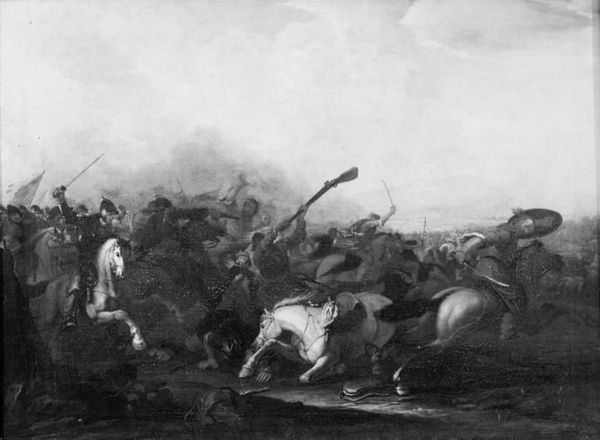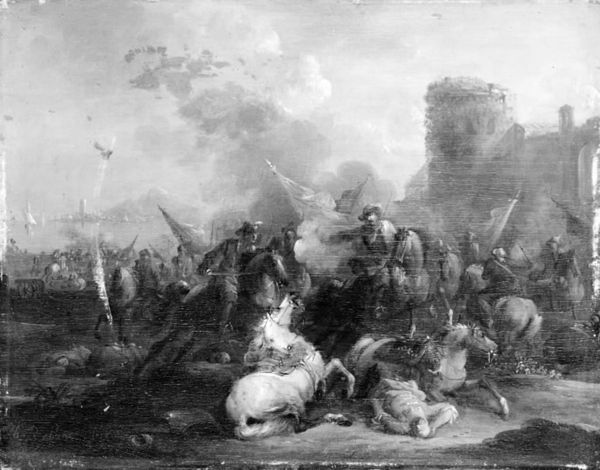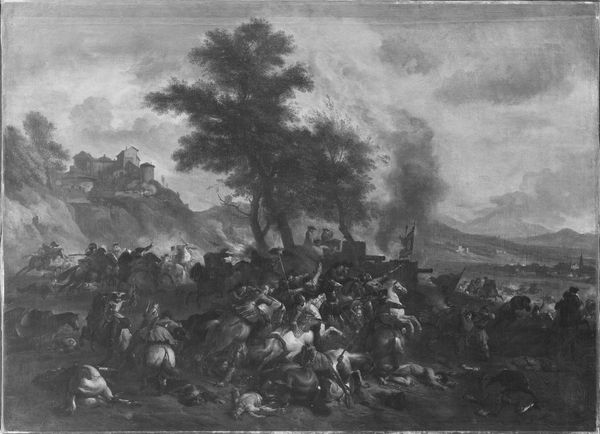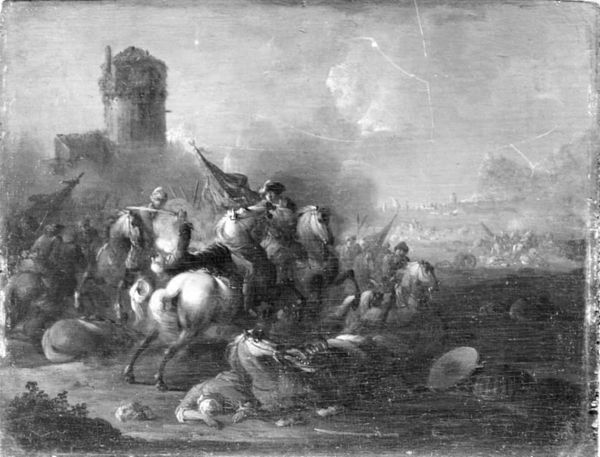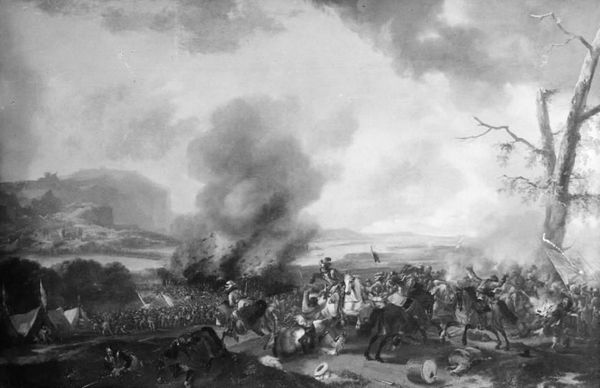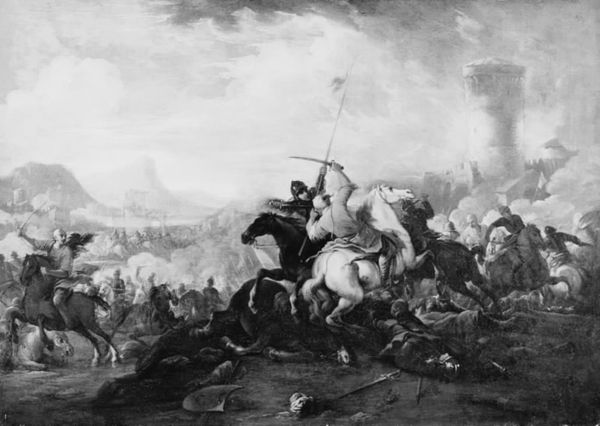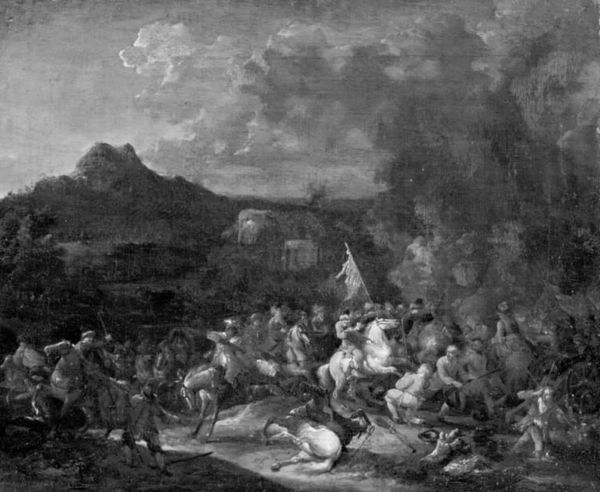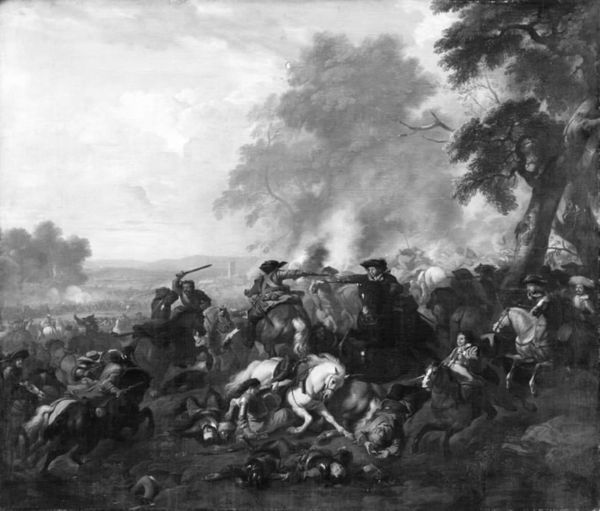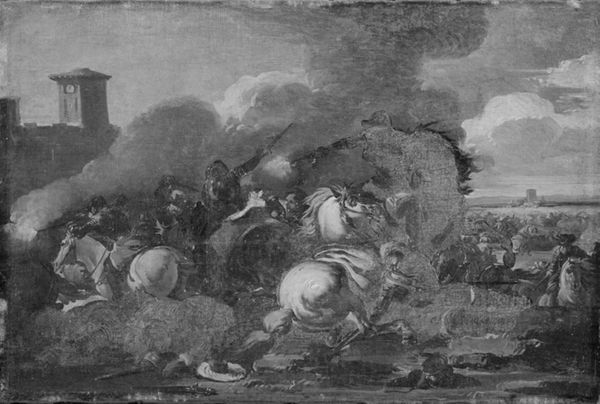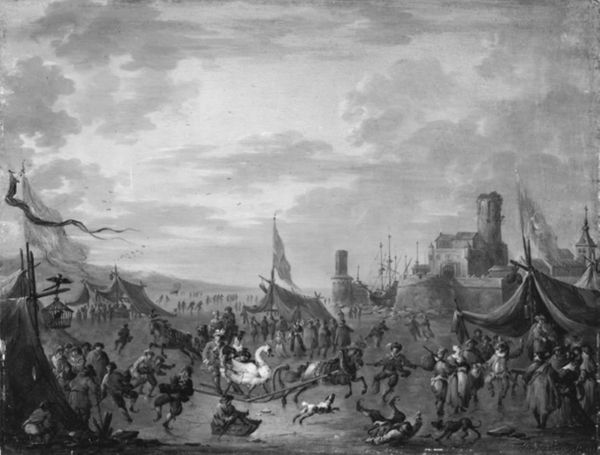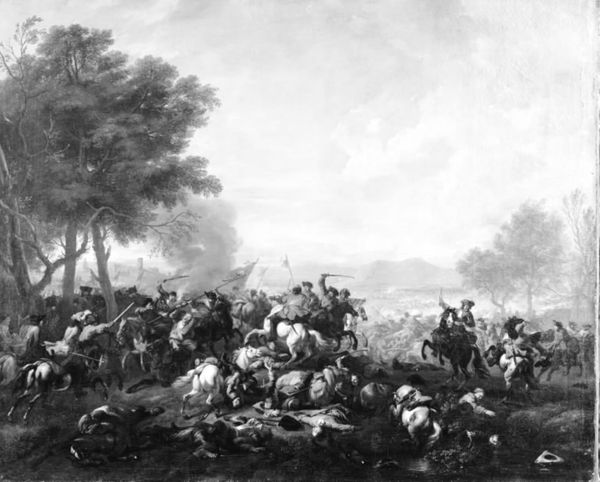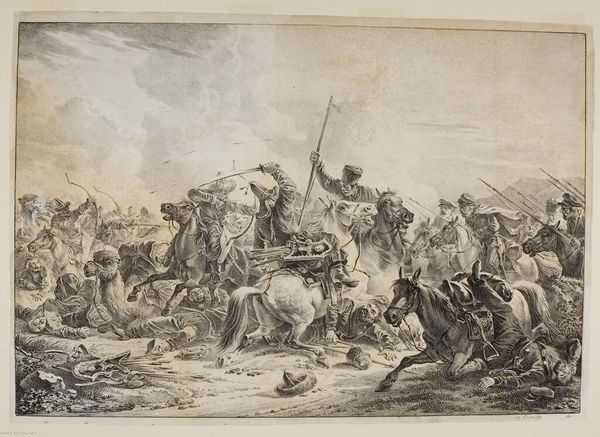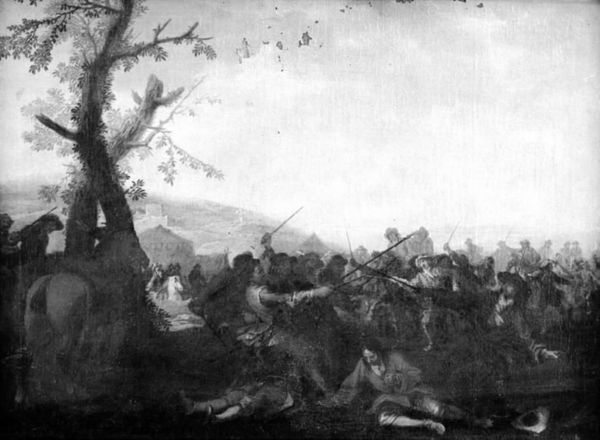
painting, oil-paint, canvas
#
baroque
#
painting
#
oil-paint
#
landscape
#
figuration
#
canvas
#
surrealism
#
genre-painting
#
history-painting
#
charcoal
Dimensions: 44.5 cm (height) x 70.5 cm (width) (Netto)
Curator: The artwork before us, titled "Battle Scenery," was painted by Joseph Parrocel sometime between 1661 and 1704. It is an oil on canvas and resides here at the SMK, Statens Museum for Kunst. Editor: It looks more like the *idea* of a battle scene. Very monochrome, lots of gray, frantic energy, but difficult to discern real detail. Curator: Parrocel was a master of battle scenes. His paintings captured the grand spectacle and served as propaganda during Louis XIV's reign. Editor: Propaganda through painting, right. But look closely. It feels quickly executed, more sketch-like than a fully finished propaganda piece. The handling of paint, quite loose. I’m curious about the state of canvas and oil paints at the time this was produced; the painting surface here looks scrubbed. Curator: Precisely. Battle scenes, even somewhat abstracted, legitimized the monarch and glorified the military. They reinforced power structures by depicting decisive victories and idealized soldierly valor, influencing public perception of ongoing conflicts. Editor: Do you think Parrocel cared much about the realities of battle? There's little suffering visible, more a generalized chaos. This piece appears hastily wrought. Maybe we see something not intended for a major commission, a study? Or maybe art as industry made perfection untenable. Curator: That’s a possibility. Often these battle scenes were designed to inspire awe, rather than depict the actual horrors of war. Also, while the final artworks might show glorification of a military campaign, some of them provided insight into then contemporary values that determined acceptable representation in state art. Editor: But even idealized battles still require resources, from the canvas itself to the artist's labor, the pigments extracted from earth and minerals. Each element involved a whole system of supply and demand. Even depicting "glory" relied on materiality and economics. Considering these layers, it invites different interpretations. Curator: I see your point. Understanding both the symbolic value promoted and the physical processes through which this image materialized provide insights into its meaning. Editor: Indeed. "Battle Scenery," as you frame it with historical understanding and I through production and the materials we observe today, provide two important perspectives into a single work.
Comments
No comments
Be the first to comment and join the conversation on the ultimate creative platform.
